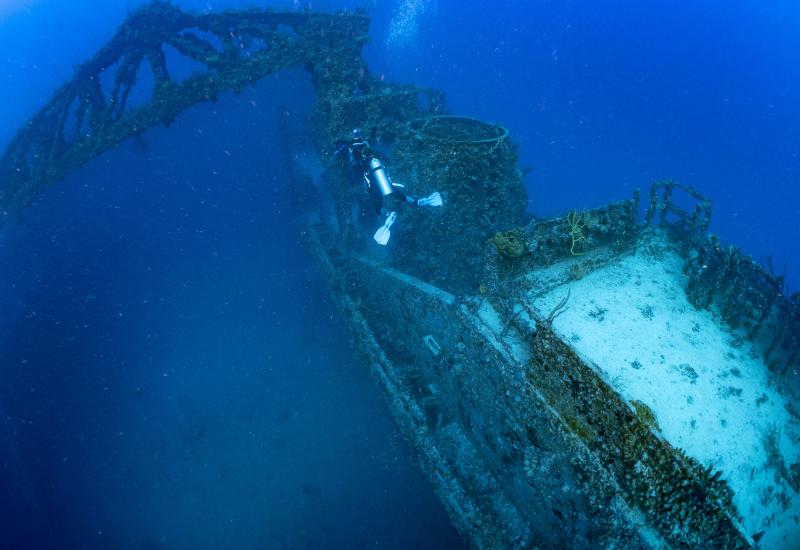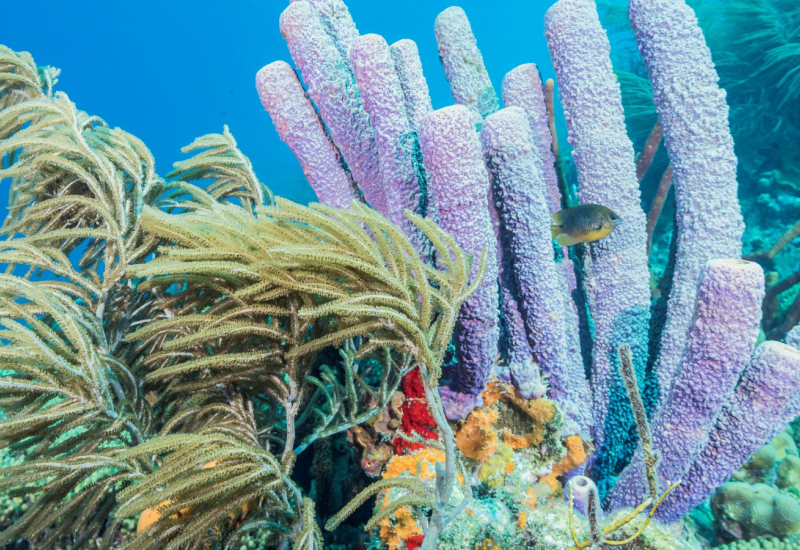Exploring Bahamas' Eleuthera and Exuma Cays by Liveaboard
Moored off the island of Eleuthera, the Aqua Cat has put us within a few fin kicks of Split Coral Head, a lumpy mass of coral that rises like Jabba the Hutt from the seafloor 50 feet below. The Aqua Cat crew sometimes uses this site for a shark feed, and we spot a few Caribbean reef sharks on the edge of the reef’s deep drop-off. They’re in a state that seems catlike — ready to pounce should the chum appear.
Like many of the dive sites off Eleuthera and the Exuma Cays, you've got a choice: You can log a ton of bottom time exploring Split Coral's signature crevice, or drop down deeper on a nearby wall where the chances are better of seeing larger pelagics like turtles, rays and sharks.

Even without the sharks, Split Coral Head’s pockmarked architecture makes for an interesting dive — an underwater high-rise condo populated by various creatures. The site gets its name from a large fracture in the upper part of the mound, a swim-through that’s festooned with corals and gorgonians, and is a haven for juvenile fish like spotted drum. The entire neighborhood — Split Coral Head and the wall — works as a scenic backdrop for wide-angle photography. Prefer macro? The cleaner shrimp, moray eels and small tropical fish found here are ideal subjects. If you’re shooting video, camp out on either end of the swim-through and capture divers gliding through.
On our dive, a couple of photographers hustle like paparazzi to get to the lip of the wall to get an image or two of the sharks, who promptly disappear. The mound offers plenty of real estate, so underwater shooters can fan out and avoid bumping into one another. Most of us, however, stay on the reef, content to explore at a leisurely pace.
Nearly an hour later we’re reluctant to ascend, though Aqua Cat's crew makes getting back on board part of the fun. In what has become our daily post-dive routine, we grab still-warm homemade white-chocolate-chip cookies, take a hot shower, and head to the sun deck to read, nap, and soak in the ocean views that every diver loves. This is bliss. This is the Bahamas' Out Islands.

Eleuthera and Exumas Dive Sites
No matter which direction you look in the Exumas or off Eleuthera, the sea, sky and sand resemble the photographs of Earth taken from space — fragile, beautiful and interconnected in a way that's overlooked when you're on terra firma. Even the 102-foot Aqua Cat becomes part of the seascape.
Exuma Sound stretches out in every direction in a rhapsody of blues — turquoise, sapphire and indigo. Make no mistake: This isn’t Cocos or the Galapagos, with heart-thumping jolts provided by massive schools of big animals, muscular currents and blue-water descents. Everything here is tempered by a massive stillness, from the ocean that lies before you like a gigantic infinity pool to the night sky pricked by the glitter of stars.
Once you arrive in these islands, every molecule in your body uncoils. But if you like a bit of excitement mixed in with your dive vacation, this corner of the Bahamas also offers daily surprises. Sharks of all kinds cruise these waters, cuts between the islands deliver hold-onto-your-reg drift dives, and pinnacles and formations attract all manner of oceangoing marine life, even whales.
Our trip begins at Aqua Cat’s home port, Hurricane Hole Marina in Nassau, Bahamas. Early Sunday morning, we motor to the Exumas, a three-hour crossing and a world apart from Nassau's high-energy pace. Aqua Cat’s typical itinerary takes divers to the Exumas or Eleuthera, depending on conditions. The Exuma Cays Land and Sea Park, southeast of Nassau, is a strictly protected no-take zone; even the islands that do not fall within the park’s boundaries boast healthy habitats. Northeast of the Exumas, is Eleuthera. Stretching for 110 miles, Eleuthera is largely undeveloped, so its reefs and beaches are pristine.

We make our first dive north of Highbourne Cay at a site called Flat Rock Reef. It’s a shallow, sandy site stippled by eel grass and studded with scattered coral heads that shelter nurse sharks, stingrays and small tropical fish. It's perfect for sorting out weighting issues.
Because of the wind direction, conditions are iffy in the Exumas, so Sunday afternoon the captain turns the Aqua Cat toward the “foot” of Eleuthera, which hangs like an anchor from the island’s southern tip. Eleuthera’s leeward coast cups a portion of Exuma Sound; just offshore are outcroppings of coral reefs punctuated by swim-throughs, small pinnacles and deep drop-offs.
The steep walls, drift dives and shark encounters are what give this itinerary its kick. Our shark-feeding dive is at Split Coral Head, but Aqua Cat offers a few places for these encounters. Caribbean reef sharks race in from all directions as crew attach blocks of frozen fish parts to the mooring line. We settle in on the sand as the sharks muscle in to tear off chunks of the chum. The shark feeds usually guarantee a sizable number of sharks showing up, but this corner of the Bahamas is known for shark encounters — Caribbean reef, lemon and nurse sharks are common — and it’s likely you’ll spot a handful more at other sites.
If you like exhilarating, you’ll tumble heads over fins at Washing Machine — south of Highbourne Caye — where tidal shifts create a 2- or 3-knot swirl of water that will propel you through a narrow cut in the reef. Other drifts are not as raucous, but most of the cuts between the islets here can be dived when the tides are running. You’ll fly over the reef at sites such as Wax Cut Drift on the northern end of Shroud Cay in the Exumas and Current Cut in northern Eleuthera.
We make an afternoon dive at Knuckle Head Reef, a site that's so shallow the lemony shafts of sunlight touch the sand bottom. You can't get any deeper than 30 feet, so bring your macro lens and wind your way through the swim-throughs that bisect the reef. Banded coral shrimp, nudibranchs and green morays shelter in the coral heads.Many of southern Eleuthera’s sites are similar to Split Coral Head, with interesting formations to explore, including Cut-Through City, Knuckle Head Reef and Jake’s Hole, but each with a unique twist. Cut-Through City’s cluster of coral heads is in about 55 feet of water, but there’s a deep wall at 90 feet that’s lined by pinnacles. A sponge-coated anchor is embedded in its face at 130 feet.
Jake's Hole is another shallow dive, but it's washed by a strong tidal current that brings in rich nutrients that attract everything from lettuce slugs to nurse sharks.
When conditions are right, Aqua Cat usually offers a full slate of diving in the chain at sites like Whale Shark Wall, Black Tip Wall and Cracked Coral Head. We make our last dive at Black Tip Wall, which is shot through with tunnels and fractures, and starts in about 85 feet of water. This fishy site is frequented by loggerheads in early spring, and by eagle rays in summer and early fall.
It’s been a lovely six days, a combination of mild and wild. For now, it’s time to head back to Nassau.
NEED TO KNOW
When to Go: Year-round, though thunderstorms in summer can last for a day or two. Air temperatures range from the low 70s F in winter and high 80s to low 90s F in summer.
Dive Conditions: Water temperatures dip to the low 70s F in January and February; mid to high 70s in March, April, November and December; and low 80s F from May through October.
Operator: The 102-foot, luxury Aqua Cat catamaran (aquacatcruises.com) offers 11 cabins with en suite bathrooms and showers, a spacious main salon, photo- and video-editing areas, a 28-foot launch for nondiving excursions and a sun deck .
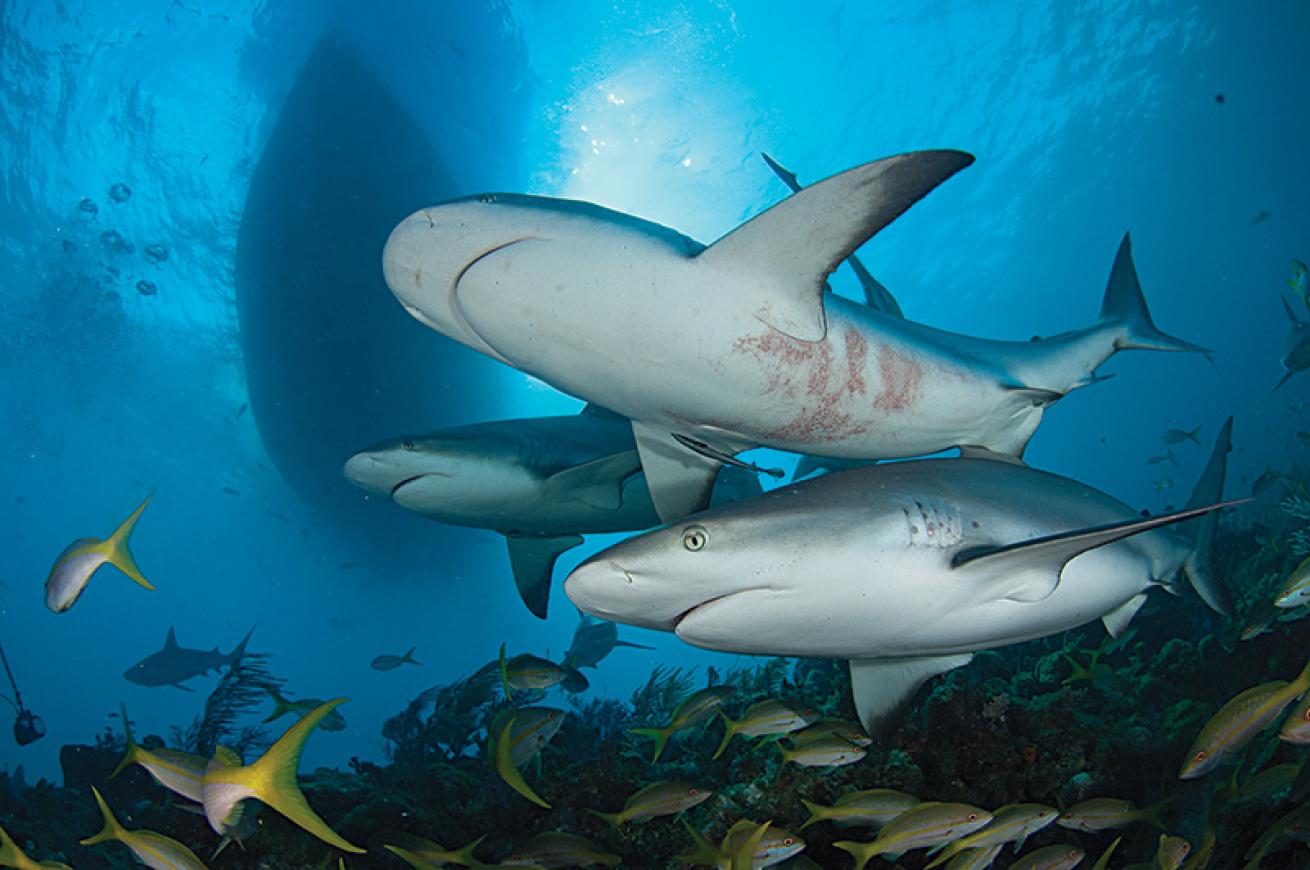
Andy MurchThe Aqua Cat itinerary includes at least one shark dive during the week.
Moored off the island of Eleuthera, the Aqua Cat has put us within a few fin kicks of Split Coral Head, a lumpy mass of coral that rises like Jabba the Hutt from the seafloor 50 feet below. The Aqua Cat crew sometimes uses this site for a shark feed, and we spot a few Caribbean reef sharks on the edge of the reef’s deep drop-off. They’re in a state that seems catlike — ready to pounce should the chum appear.
Like many of the dive sites off Eleuthera and the Exuma Cays, you've got a choice: You can log a ton of bottom time exploring Split Coral's signature crevice, or drop down deeper on a nearby wall where the chances are better of seeing larger pelagics like turtles, rays and sharks.
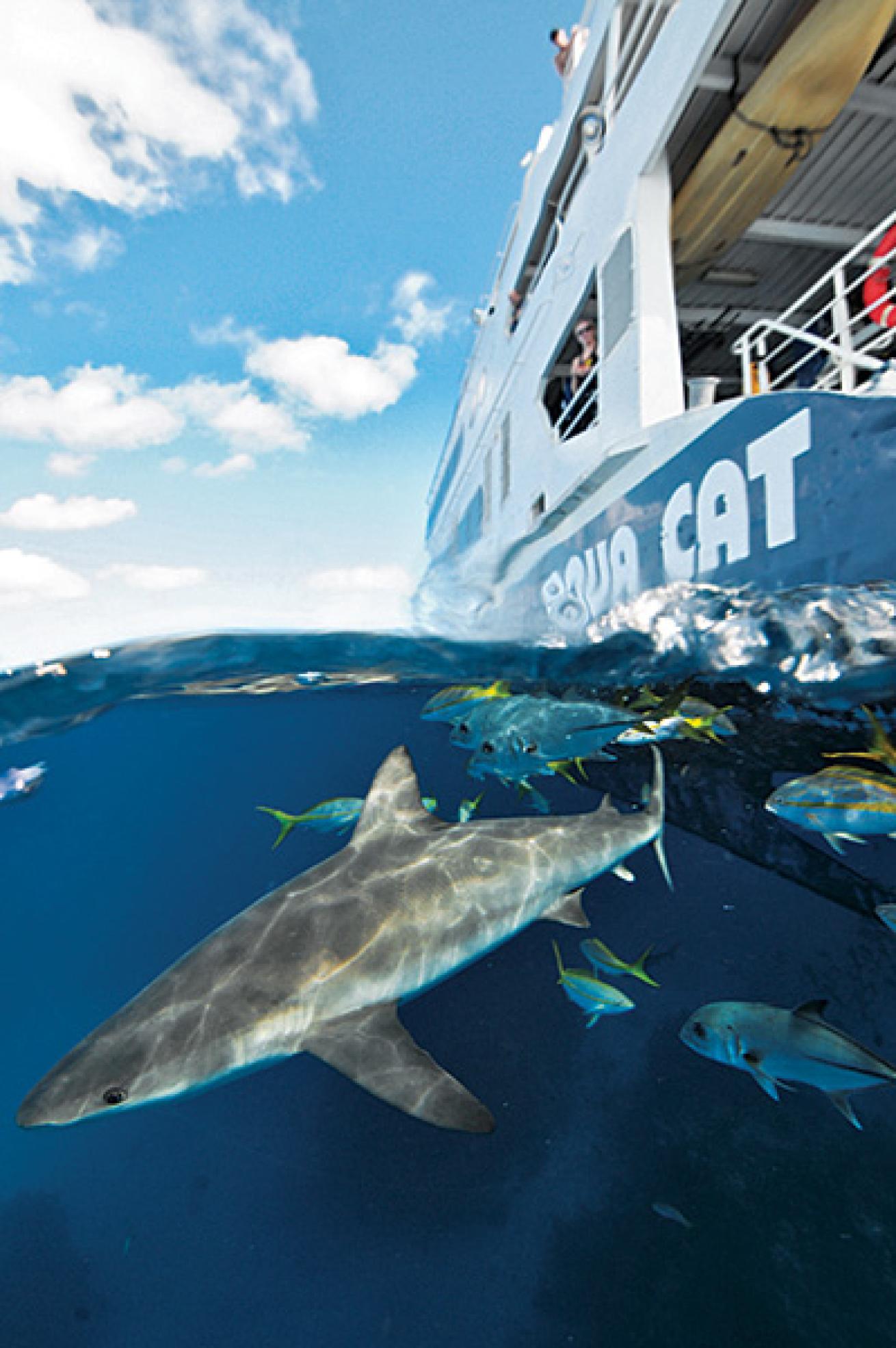
Courtesy Aqua CatThe Aqua Cat crew uses a frozen chunk of discarded fish parts to attract Caribbean reef sharks. Sharks are common in the Bahamas — though rare, guests have had encounters with hammerheads and whale sharks.
Even without the sharks, Split Coral Head’s pockmarked architecture makes for an interesting dive — an underwater high-rise condo populated by various creatures. The site gets its name from a large fracture in the upper part of the mound, a swim-through that’s festooned with corals and gorgonians, and is a haven for juvenile fish like spotted drum. The entire neighborhood — Split Coral Head and the wall — works as a scenic backdrop for wide-angle photography. Prefer macro? The cleaner shrimp, moray eels and small tropical fish found here are ideal subjects. If you’re shooting video, camp out on either end of the swim-through and capture divers gliding through.
On our dive, a couple of photographers hustle like paparazzi to get to the lip of the wall to get an image or two of the sharks, who promptly disappear. The mound offers plenty of real estate, so underwater shooters can fan out and avoid bumping into one another. Most of us, however, stay on the reef, content to explore at a leisurely pace.
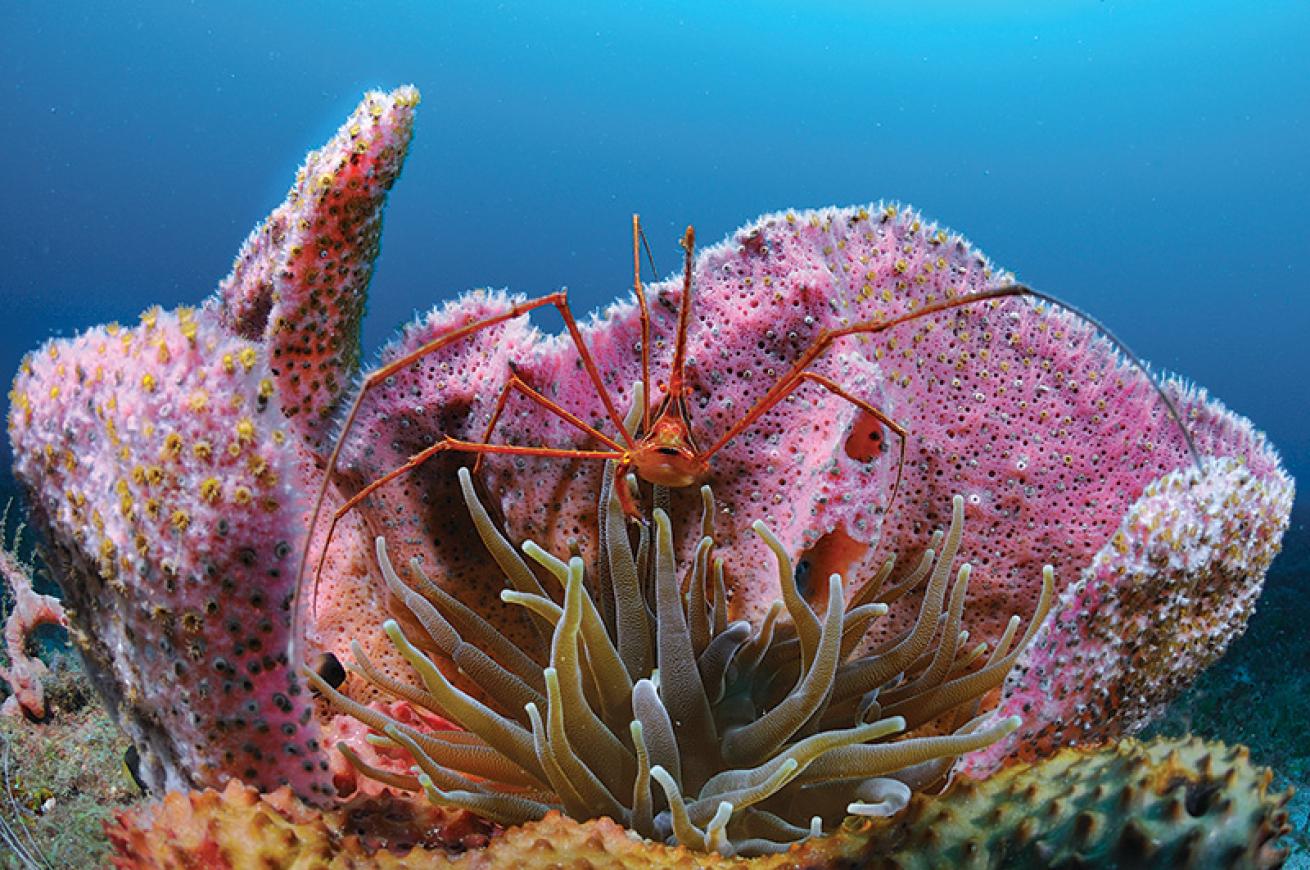
Claude RuffYou'll want a wide-angle lens on your camera for the reef scenics and shark encounter, but your macro lens will come in handy, too. There's a plethora of small critters, like this crab.
Nearly an hour later we’re reluctant to ascend, though Aqua Cat's crew makes getting back on board part of the fun. In what has become our daily post-dive routine, we grab still-warm homemade white-chocolate-chip cookies, take a hot shower, and head to the sun deck to read, nap, and soak in the ocean views that every diver loves. This is bliss. This is the Bahamas' Out Islands.
Eleuthera and Exumas Dive Sites
No matter which direction you look in the Exumas or off Eleuthera, the sea, sky and sand resemble the photographs of Earth taken from space — fragile, beautiful and interconnected in a way that's overlooked when you're on terra firma. Even the 102-foot Aqua Cat becomes part of the seascape.
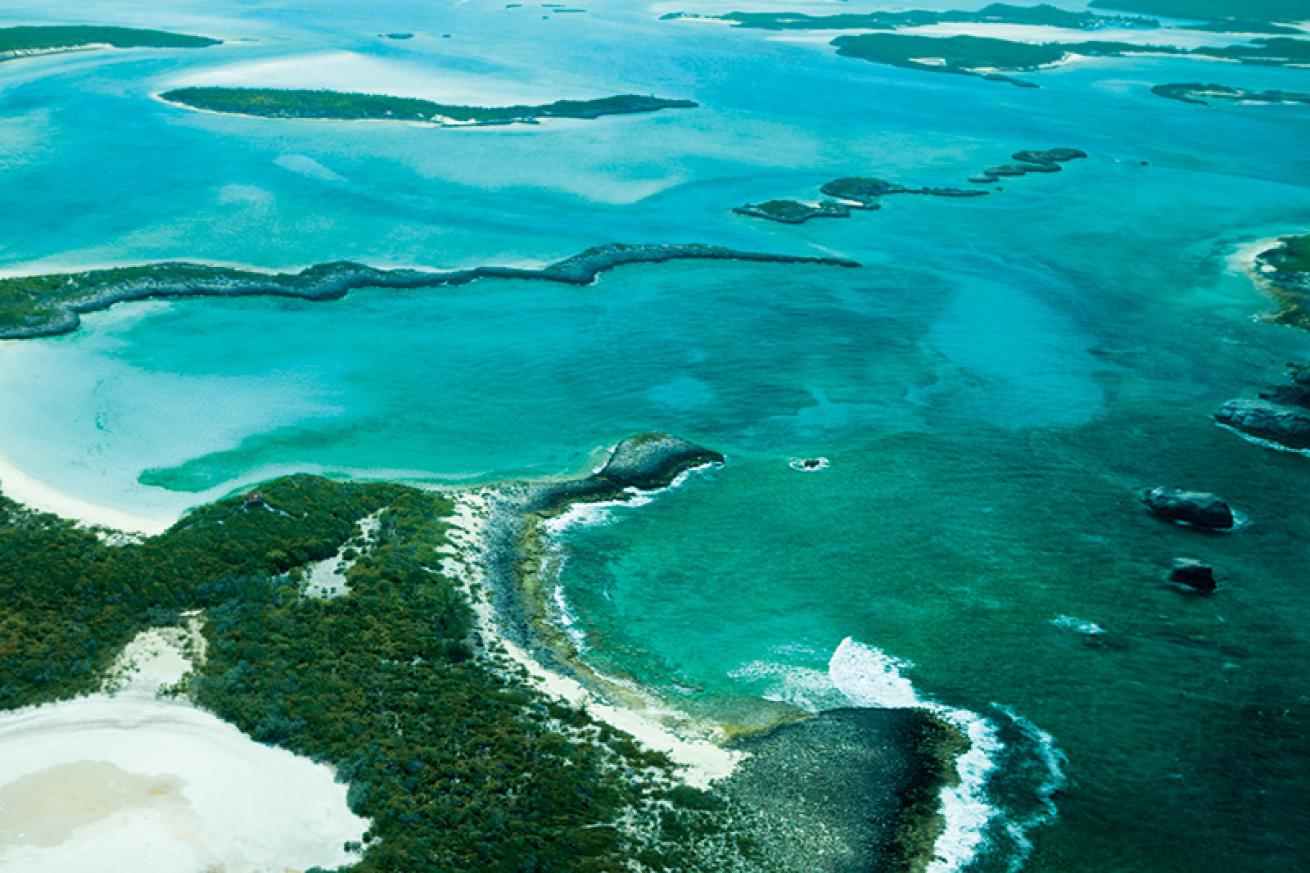
Zach StovallThis aerial view of the Exuma Cays showcases the Caribbean's lovely range of blues — from electric blue to aquamarine.
Exuma Sound stretches out in every direction in a rhapsody of blues — turquoise, sapphire and indigo. Make no mistake: This isn’t Cocos or the Galapagos, with heart-thumping jolts provided by massive schools of big animals, muscular currents and blue-water descents. Everything here is tempered by a massive stillness, from the ocean that lies before you like a gigantic infinity pool to the night sky pricked by the glitter of stars.
Once you arrive in these islands, every molecule in your body uncoils. But if you like a bit of excitement mixed in with your dive vacation, this corner of the Bahamas also offers daily surprises. Sharks of all kinds cruise these waters, cuts between the islands deliver hold-onto-your-reg drift dives, and pinnacles and formations attract all manner of oceangoing marine life, even whales.
Our trip begins at Aqua Cat’s home port, Hurricane Hole Marina in Nassau, Bahamas. Early Sunday morning, we motor to the Exumas, a three-hour crossing and a world apart from Nassau's high-energy pace. Aqua Cat’s typical itinerary takes divers to the Exumas or Eleuthera, depending on conditions. The Exuma Cays Land and Sea Park, southeast of Nassau, is a strictly protected no-take zone; even the islands that do not fall within the park’s boundaries boast healthy habitats. Northeast of the Exumas, is Eleuthera. Stretching for 110 miles, Eleuthera is largely undeveloped, so its reefs and beaches are pristine.
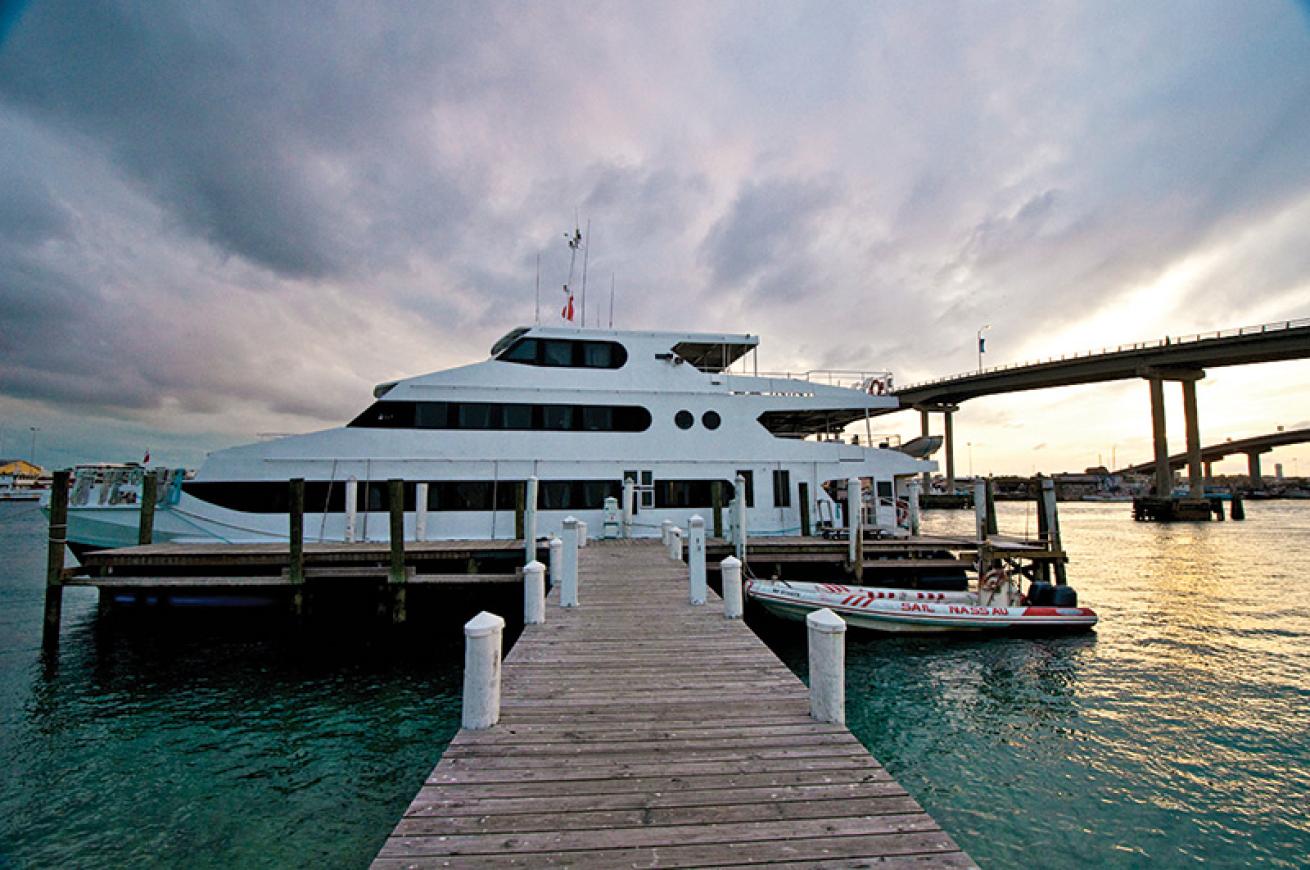
Aleksandra BartnickaThe 102-foot luxury catamaran live-aboard Aqua Cat departs from Nassau.
We make our first dive north of Highbourne Cay at a site called Flat Rock Reef. It’s a shallow, sandy site stippled by eel grass and studded with scattered coral heads that shelter nurse sharks, stingrays and small tropical fish. It's perfect for sorting out weighting issues.
Because of the wind direction, conditions are iffy in the Exumas, so Sunday afternoon the captain turns the Aqua Cat toward the “foot” of Eleuthera, which hangs like an anchor from the island’s southern tip. Eleuthera’s leeward coast cups a portion of Exuma Sound; just offshore are outcroppings of coral reefs punctuated by swim-throughs, small pinnacles and deep drop-offs.
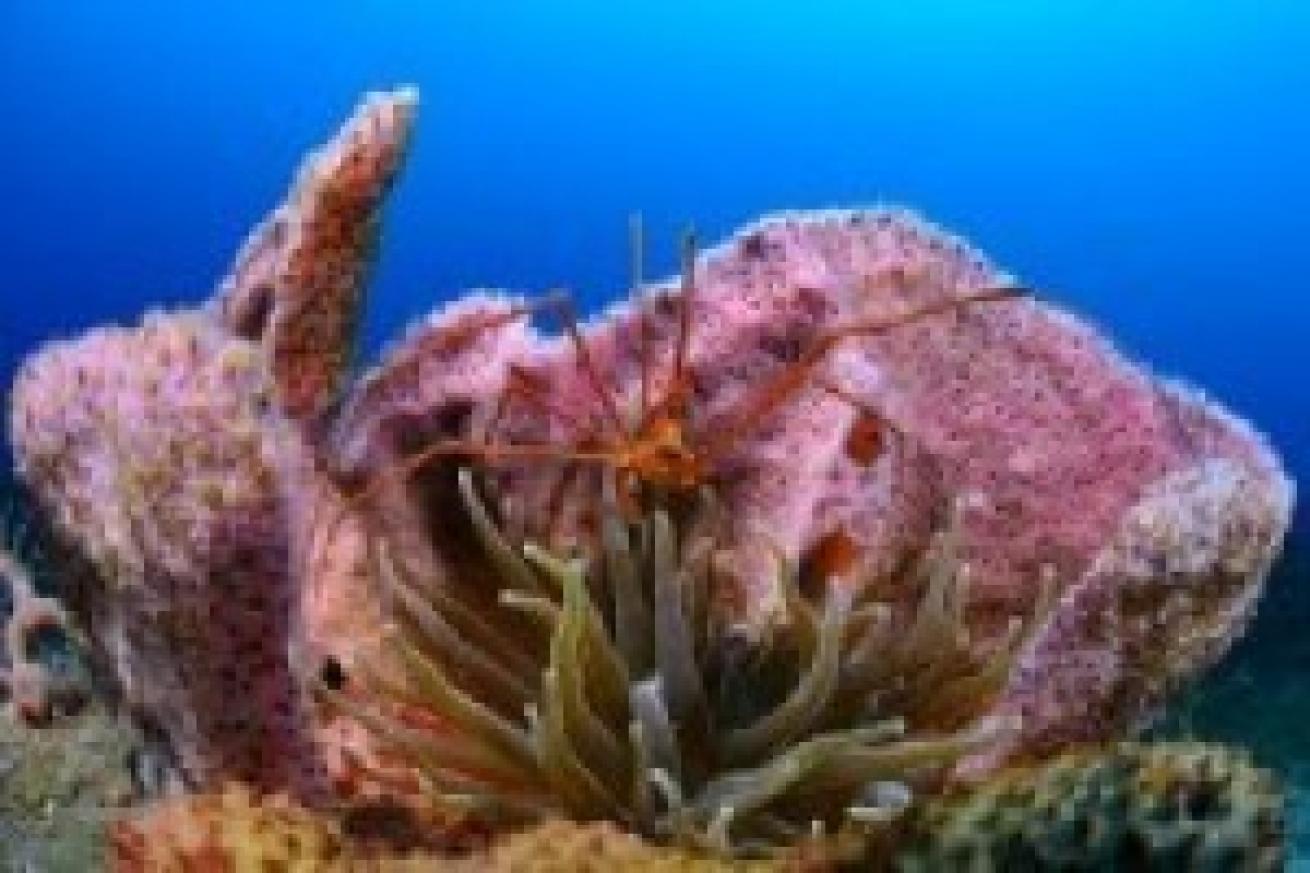
..
The steep walls, drift dives and shark encounters are what give this itinerary its kick. Our shark-feeding dive is at Split Coral Head, but Aqua Cat offers a few places for these encounters. Caribbean reef sharks race in from all directions as crew attach blocks of frozen fish parts to the mooring line. We settle in on the sand as the sharks muscle in to tear off chunks of the chum. The shark feeds usually guarantee a sizable number of sharks showing up, but this corner of the Bahamas is known for shark encounters — Caribbean reef, lemon and nurse sharks are common — and it’s likely you’ll spot a handful more at other sites.
If you like exhilarating, you’ll tumble heads over fins at Washing Machine — south of Highbourne Caye — where tidal shifts create a 2- or 3-knot swirl of water that will propel you through a narrow cut in the reef. Other drifts are not as raucous, but most of the cuts between the islets here can be dived when the tides are running. You’ll fly over the reef at sites such as Wax Cut Drift on the northern end of Shroud Cay in the Exumas and Current Cut in northern Eleuthera.
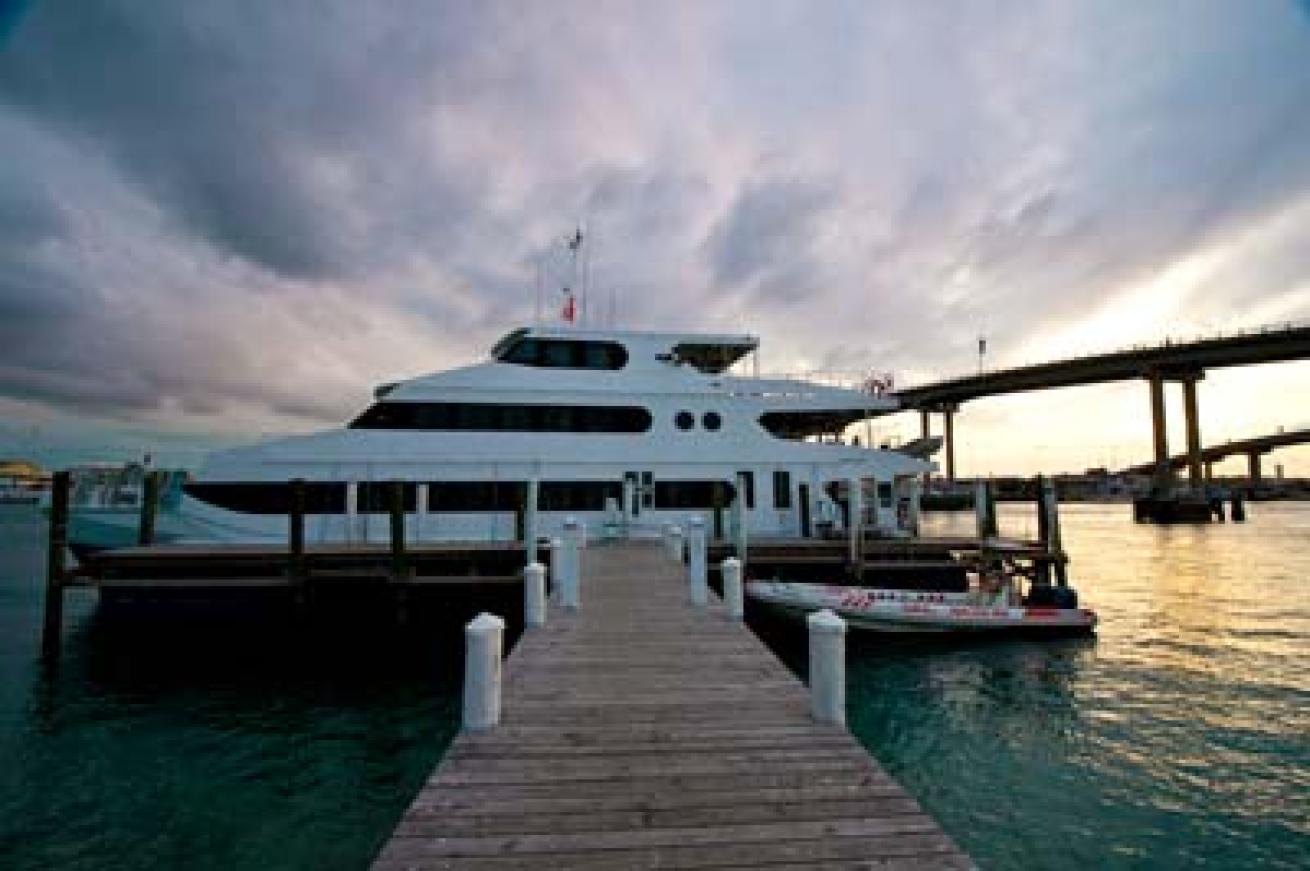
..
We make an afternoon dive at Knuckle Head Reef, a site that's so shallow the lemony shafts of sunlight touch the sand bottom. You can't get any deeper than 30 feet, so bring your macro lens and wind your way through the swim-throughs that bisect the reef. Banded coral shrimp, nudibranchs and green morays shelter in the coral heads.Many of southern Eleuthera’s sites are similar to Split Coral Head, with interesting formations to explore, including Cut-Through City, Knuckle Head Reef and Jake’s Hole, but each with a unique twist. Cut-Through City’s cluster of coral heads is in about 55 feet of water, but there’s a deep wall at 90 feet that’s lined by pinnacles. A sponge-coated anchor is embedded in its face at 130 feet.
Jake's Hole is another shallow dive, but it's washed by a strong tidal current that brings in rich nutrients that attract everything from lettuce slugs to nurse sharks.
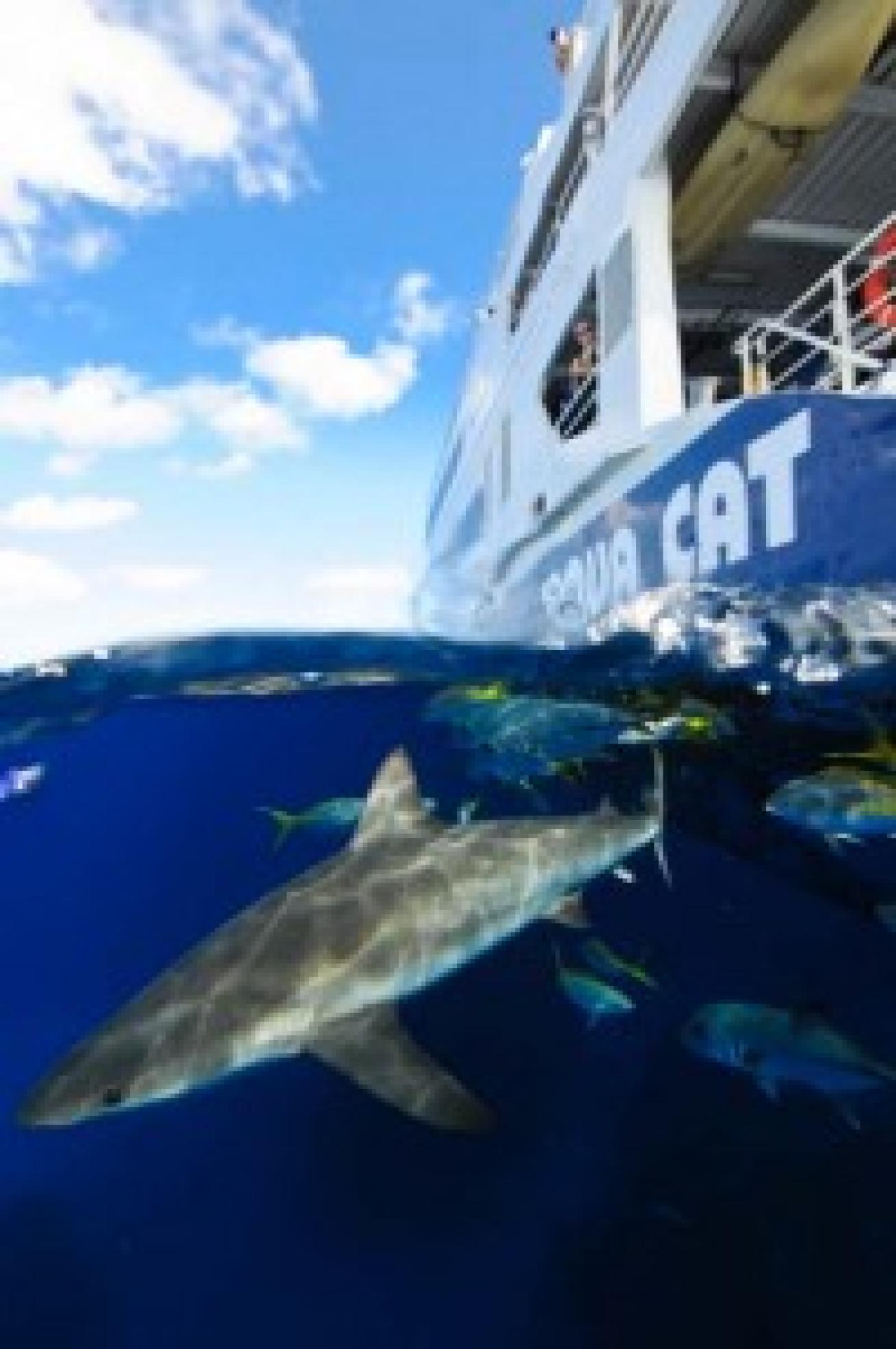
..
When conditions are right, Aqua Cat usually offers a full slate of diving in the chain at sites like Whale Shark Wall, Black Tip Wall and Cracked Coral Head. We make our last dive at Black Tip Wall, which is shot through with tunnels and fractures, and starts in about 85 feet of water. This fishy site is frequented by loggerheads in early spring, and by eagle rays in summer and early fall.
It’s been a lovely six days, a combination of mild and wild. For now, it’s time to head back to Nassau.
NEED TO KNOW
When to Go: Year-round, though thunderstorms in summer can last for a day or two. Air temperatures range from the low 70s F in winter and high 80s to low 90s F in summer.
Dive Conditions: Water temperatures dip to the low 70s F in January and February; mid to high 70s in March, April, November and December; and low 80s F from May through October.
Operator: The 102-foot, luxury Aqua Cat catamaran (aquacatcruises.com) offers 11 cabins with en suite bathrooms and showers, a spacious main salon, photo- and video-editing areas, a 28-foot launch for nondiving excursions and a sun deck .

